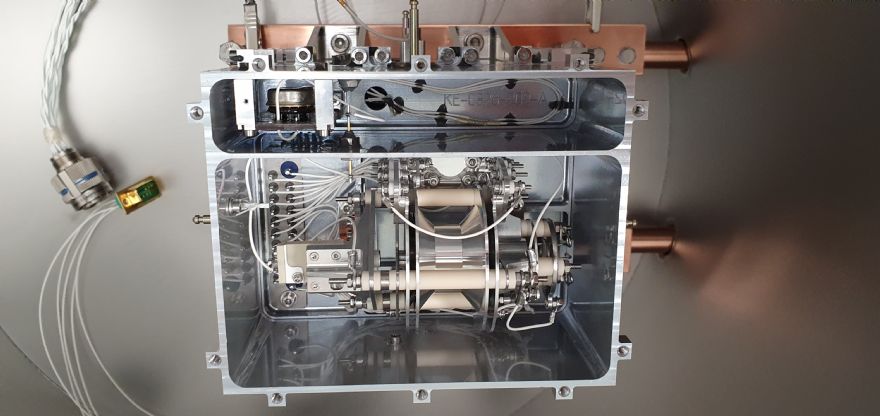
A major global space mission that will see a British-built science instrument land on the Moon for the first time, got underway when Astrobotic’s Peregrine Mission One launched last month from Cape Canaveral in Florida. The Peregrine Lunar Lander, which is expected to land on the Moon around mid-February, includes a scientific instrument known as the Peregrine Ion Trap Mass Spectrometer (PITMS). A key component of this has been developed in the UK via £14 million of Government funding through the UK’s membership of the European Space Agency.
The PITMS instrument will explore the Moon’s atmosphere, by measuring water and other molecules, and unlock the mysteries of its ‘water cycle’. This study of volatile substances (materials that can turn into gas) will provide valuable insights into lunar composition and conditions. The data collected will contribute to our understanding of the Moon’s potential to provide resources like water, opening new possibilities for future human presence on the lunar surface.
The UK-built component — the Exospheric Mass Spectrometer (EMS) — was developed under a European Space Agency contract by scientists at the Open University and RAL Space, UK’s national space lab. It represents the first instrument on the Moon that has been built in the UK and in Europe and embodies the UK’s commitment to economic growth and ‘showcases the nation’s prowess in cutting-edge space technology’.
Ion trapAs part of the PITMS, the EMS allows researchers to study atoms and molecules in a gas. Lunar molecules in the Moon’s exosphere will enter the PITMS, be turned into ions, and then stored in an electric field known as the ‘ion trap’. The ions are released from the trap into the detector, unveiling their chemical makeup and helping scientists to decipher the Moon’s composition.
Science and Technology Secretary Michelle Donelan said: “The Exospheric Mass Spectrometer will be the first science component developed in the UK destined for the lunar surface, marking a historic moment for the UK space industry. This significant achievement also lays the groundwork for understanding how to sustain extended human presence on the Moon in the future, and thereby changing the way humankind interacts with the solar system around us forever. It is also a further sign of our close collaboration with international partners like NASA, which I recently visited at the Johnson Centre, where we even discussed the potential for British astronauts to reach the moon in the future.”
Mark Thomson, STFC’s executive chairman, added: “Ambitious plans for future space exploration, including crewed missions to the Moon and Mars, will need to be informed by new scientific data. The cutting-edge instrumentation on the Peregrine Lunar Lander will gather essential data from the surface of the moon, paving the way for future missions that will inspire the next generations. STFC and RAL Space are proud to have been able to provide our expertise in space technology to contribute to the success of this mission.”